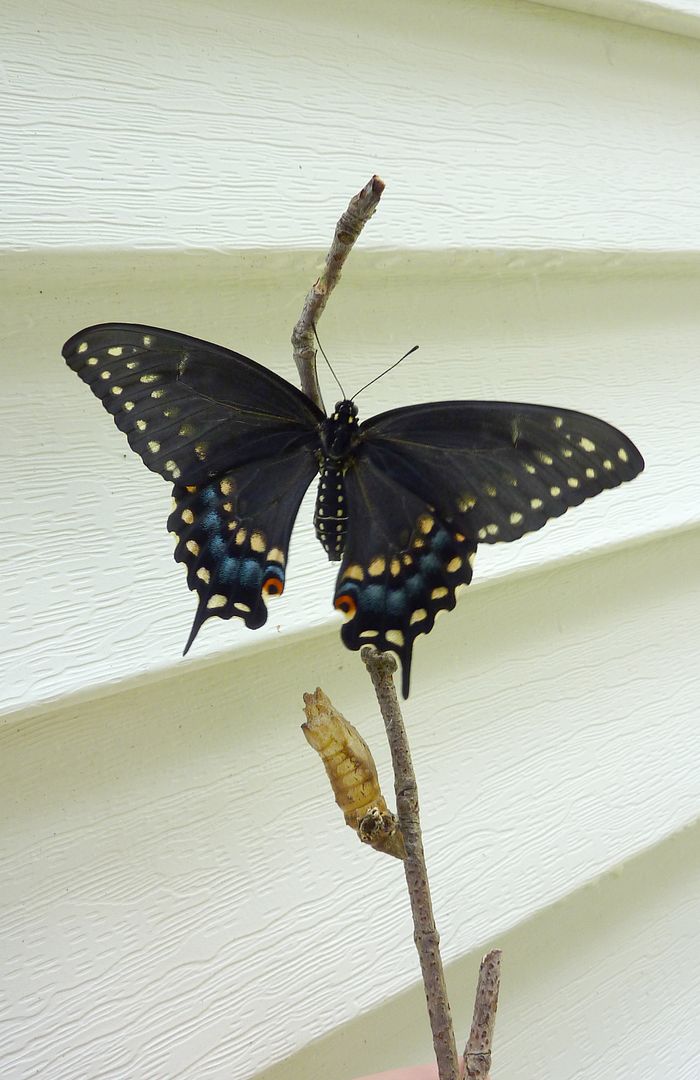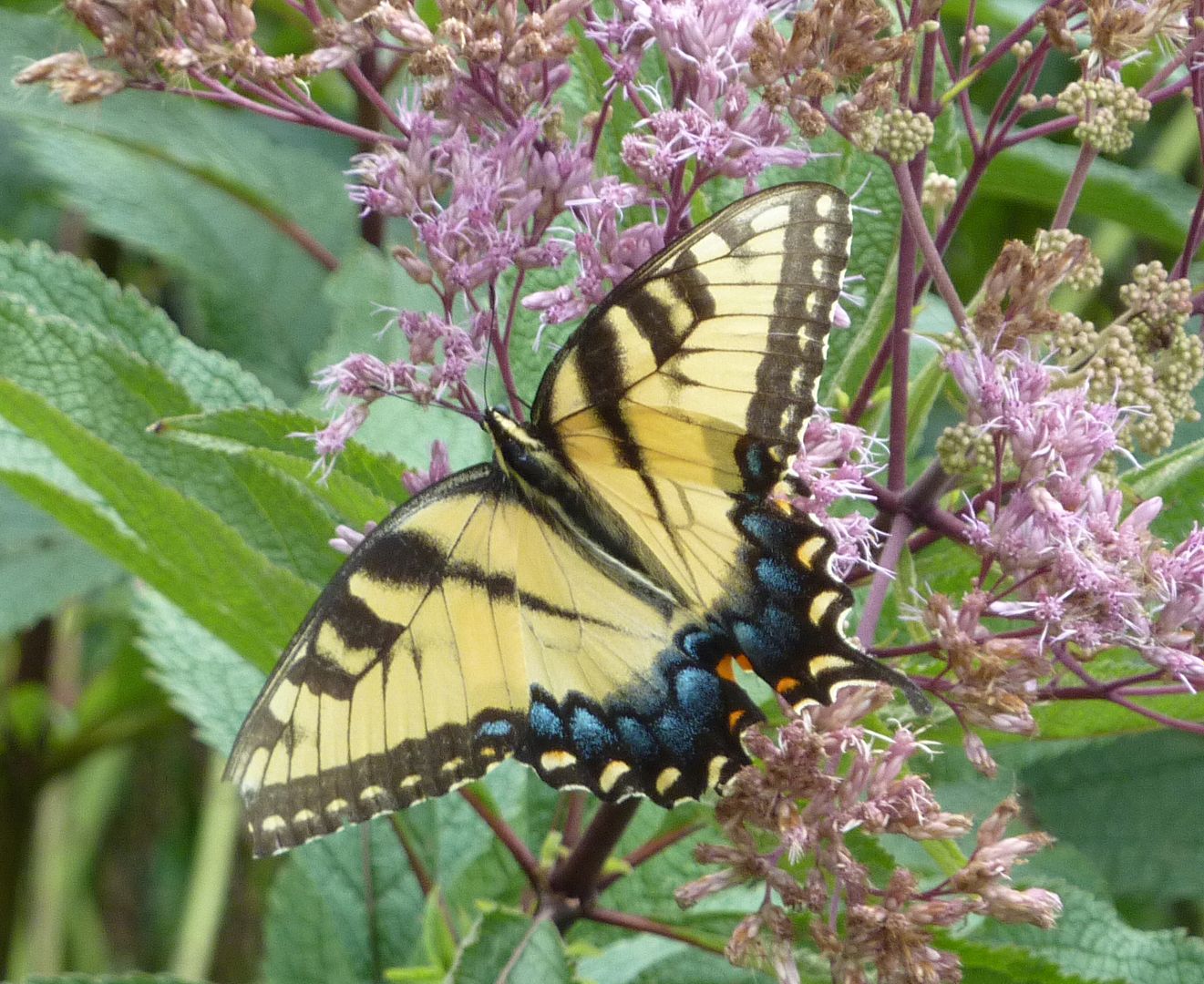The first butterflies I encountered this year was a mating pair of Mourning Cloaks. Apparently this is the way to take pictures of them because all my prior attempts caused them to zip into the air at speeds thought to be impossible by most butterfly standards. The two were happy to move onto my finger and I was able to position them around as I liked. It's always nice to find nature being cooperative.
Red Admirals are another butterfly I'd struggled to photograph and I've yet to get one with their wings open.
Nothing butterfly related really happened again until the summer when I noticed some unusual chewing on the grape vine. Eight-Spotted Foresters turned out to be the culprit. They're tricky to find because disturbing the host plant in any way causes them to abruptly drop via silk lasso where they're quickly lost in the grass below.
There was an Abbot Sphinx on there too but unfortunately it vanished a few days afterward. That's a shame because they eventually get coloration to mimic a snake with one-eye.
Never got this one ID'd but it was eating the asparagus. I believe it's some sort of Owlet which narrows it down to a few hundred candidates.
Probably the most faded Red Admiral I've ever seen. They're normally black and orange. (This is a Red Admiral right?) I'm not counting this as getting one with the wings open just from what an awful condition its in.
Sulphurs are one butterfly I've been trying to attract more of, namely by planting Wild Senna, but I've found these plants need more moisture than most of my yard can offer. False Indigos are far easier to grow but they're not as often used by this butterfly. I did throw out some Wild Senna seeds but none of them germinated this year. Hopefully they'll do so this spring.
Black Swallowtails were the more recent visitor of the garden.
Parsley was the host plant of choice, but I did find a few on the Golden Alexander as well. A couple things about this species: the first instar caterpillars are so amazingly tiny I shell never be able to eat fresh parsley again without examining it thoroughly with the largest magnifying glass I own. They're tiny black leach-like creatures that are fast moving and unrecognizable as caterpillars unless magnified. Secondly, I was surprised how little each caterpillar eats in a day. A single spring can sustain a caterpillar until it's 2/3rds grown. The last instar on the other hands seems to eat two whole springs a day.
I was so successful with Black Swallowtails that I was able to photograph everything about their life cycle except for them over wintering. Though I hope to fix that next year.
Females have more blue and less yellow, where as males have bolder looking yellow spots and almost no blue at all.
Monarchs seems to be avoiding my yard this year. I was seeing them everywhere else in NJ but not my yard, which is a shame becuase I had lots of milkweed that went uneaten. A girl I work with apparently, her neighbor also lives in my town and she got caterpillars on her milkweed so I'm jealous.
Sachem Skippers, male on the left, female on the right. I had no idea I'd photographed a set of the same species until my friend on facebook helped me ID them. I always get dozens of skippers at the end of the year and never pay any attention to them. I'm sort of tempted to fix that but I've never been a fan of their host plant, grasses.
Eastern Tiger Swallowtail.
Eastern Tiger Swallowtail. I believe this is a female because the blue is stronger where as males have either less blue or it's absent entirely.
One of the first Black Swallowtails I raised. He was nice enough to let me show him my little meadow garden, but darted off after the wind started blowing.
I like how they look like plant stems. Some actually start out green and fade to brown in a few days while others just skip ahead to being brown from the start.
Cabbage Whites are another one I don't pay attention to much. I feel like seeing them is somehow a mark of a bad gardener. Not that I've ever prided myself on growing cabbage.
At the Mt. Cuba Center butterflies were flying in formations in their round garden. Most of the trees there are host plants to something or other and their gardens are almost always swarming with something bright and showy.
Under a Tall Coreopsis leaf I came across a chrysalis to what might be a Fritillary.
Monarchs finally started arriving after the milkweed was past its prime.
Not a good angle but an interesting one.
They started showing up on the New England Asters two at a time. I couldn't get a group photo as I'd like it to be so that's why I'm not posting the pair of them here. Hopefully I'll see more of them next year.

























